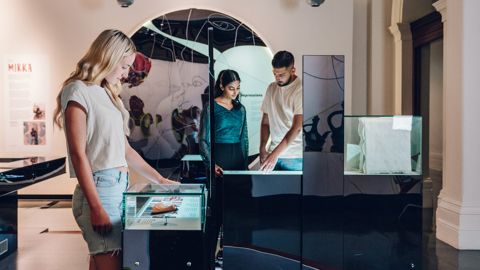Strongest shrimp in the sea
Next time you find yourself tapping on a fishbowl, remember that a mantis shrimp might tap back!
The mantis shrimp is a predatory crustacean not to be meddled with. It has some of the most advanced eyes in the animal kingdom, capable of detecting 12 colour wavelengths – four times as many as humans!
Many species of mantis shrimp live in tropical and subtropical waters, so you may expect mellow behaviour to match those mild temperatures. However you couldn’t get much further from the truth! These aggressive predators aren’t afraid to pick on creatures much bigger than themselves and can inflict some serious damage.
Mantis shrimps can be accurately (if terrifyingly!) described as either ‘spearers’ or ‘smashers’. Spearers have a spiny claw that impales and immobilises prey, while smashers have a club that bludgeons their next meal to death. In fact, smashers have the fastest punch in the world and can strike in less than three-thousandths of a second! Should a mantis shrimp swing a punch and miss, the resulting shockwaves from the super-fast blow can still kill their intended target.
This destructive crustacean also benefits from an extremely tough exterior shell, which is such an effective defence mechanism that scientists are researching the mantis shrimp to develop body armour for soldiers.
Although some mantis shrimp can be beautifully coloured, Museums Victoria strongly advises against keeping them as pets. They have been known to devour their fellow aquarium inhabitants, and can prove incredibly difficult to remove from a tank as they will burrow away and hide. Perhaps most impressively, larger species of mantis shrimp can punch aquarium glass with enough force to break it! Consider this a warning to scuba divers too – a blow to the face from a mantis shrimp may send you swimming for the surface with a shattered diving mask.
There are over 250 specimens representing 74 species of mantis shrimp in Museums Victoria’s Collection. You can see one on display in the Marine Life exhibition at Melbourne Museum!








